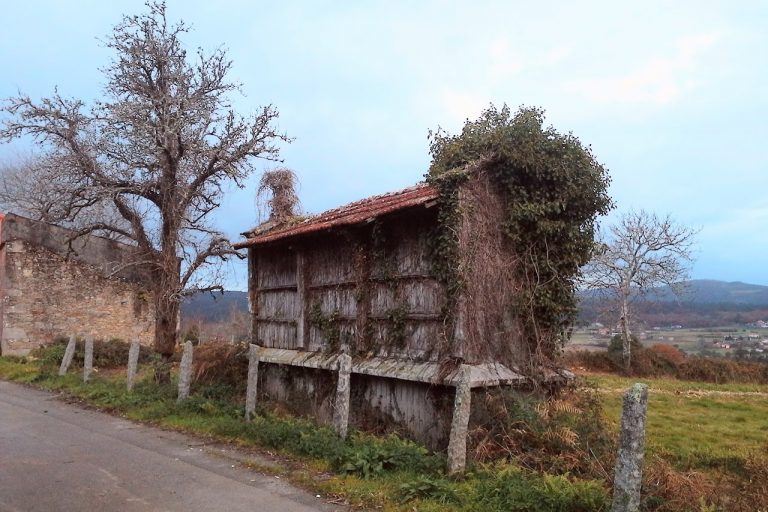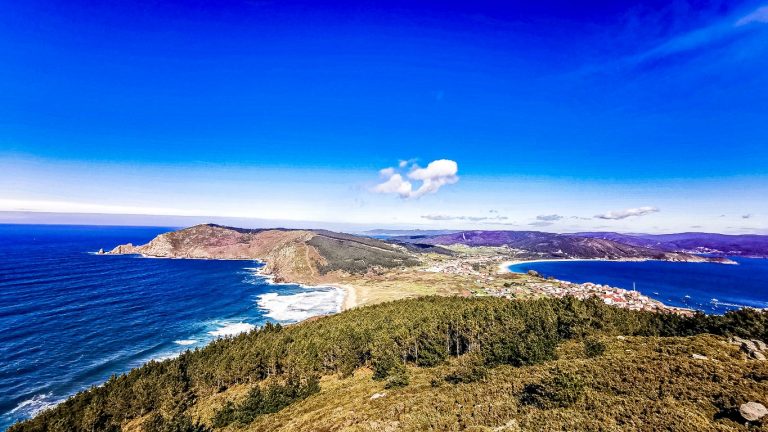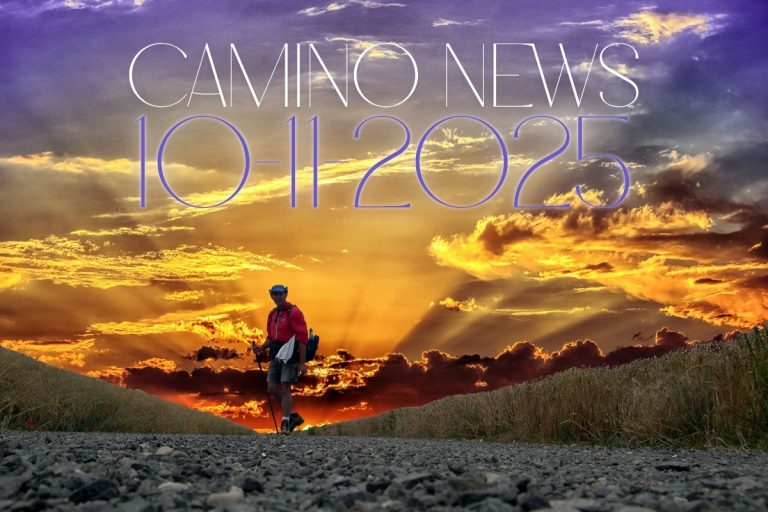
From the Grotto of Mary across the Pyrenees to the Bridges of Navarra
Introduction – Your first encounter with this path
Early morning in Lourdes: in the Grotto of Massabielle hundreds of candles flicker, their light dancing across the rock as pilgrims silently draw water or pause in prayer. Behind the walls of the sanctuary, the first foothills of the Pyrenees are already rising. Here, in a place where Marian devotion meets the centuries-old pilgrimage tradition, a very special route begins.
The Camino Aragonés from Lourdes first takes you through the gentle foothills of the Pyrenees along the Camino de Piémont, joins the venerable Via Tolosana at Oloron-Sainte-Marie, crosses the Somport Pass into Spain, and then unfolds in the wide valleys of Aragón. Finally, it reaches Navarra, where at the Romanesque bridge of Puente la Reina it merges with the Camino Francés.
This is not the famous main stream: it is lonelier, more pristine, more intense. Those who choose it consciously opt for silence, for Romanesque traces of bygone centuries, and for the magic of a pilgrimage that weaves together spirituality, history, and nature in a unique way.
Historical background & cultural significance
The roots of this path lie in several strands that intertwined over the centuries.
Lourdes:
Since the Marian apparitions of 1858, Lourdes has become one of the world’s most visited pilgrimage sites. That year, 14-year-old Bernadette Soubirous reported her encounters with the Virgin Mary in the Grotto of Massabielle. Today, millions come every year to draw from the healing spring or take part in the moving candlelight processions. Though it was not yet a pilgrimage destination in the Middle Ages, Lourdes now serves as a bridge: pilgrims begin here, uniting Marian devotion with the ancient goal of Santiago.
Camino de Piémont Pyrénéen:
This path follows the foothills of the Pyrenees, through a region that has always been a natural corridor. Already in the late Middle Ages, farmers, traders, and pilgrims used the route from Carcassonne through Foix and Saint-Lizier to Lourdes and onward to Oloron-Sainte-Marie. It was never as famous as the main arteries, but for the people of the region it was invaluable – a lifeline connecting small villages, and a quieter access to the more prominent Via Tolosana.
Via Tolosana (Arles Way):
The Via Tolosana is one of the four classical French pilgrimage routes, already described in the 12th-century Codex Calixtinus. From Arles it led through Montpellier, Toulouse, and the Béarn to Oloron-Sainte-Marie, where it merged with regional routes from Carcassonne and Lourdes before crossing the Somport into Spain. Toulouse and Arles were cultural and religious centers, and even today churches, hospices, and bridges along the route bear witness to its importance.
Camino Aragonés:
On the Spanish side the route continued as the Camino Aragonés. Already in the High Middle Ages it became one of the main arteries leading into the Iberian Peninsula. Cities like Jaca – home of Spain’s first Romanesque cathedral – and the mysterious monastery of San Juan de la Peña made it famous. For centuries it served pilgrims, knights, and merchants alike, until the Roncesvalles Pass in neighboring Navarra gained greater significance and became the favored crossing.
Legends and culture:
The Camino Aragonés is rich in symbols. In Lourdes, it is the water, regarded as a sign of healing. In the Pyrenees, stories abound of shepherds, smugglers, and saints who crossed the pass. San Juan de la Peña, tucked beneath a towering cliff, was the refuge of the Aragonese kings and remains to this day a spiritual heart of the route. Everywhere along the way – in bridges, churches, and cathedrals – one encounters traces of the countless pilgrims who once rested, prayed, and moved on.
Facts:
- First mention: Via Tolosana, 12th century (Codex Calixtinus)
- Historical key sites: Lourdes, Oloron, Somport, Jaca, San Juan de la Peña, Sangüesa, Puente la Reina
- Important legends: Marian apparitions at Lourdes, refuge of the kings at San Juan de la Peña
- Key monuments: Cathedral of Jaca, Monastery of San Juan de la Peña, Bridge of Puente la Reina






Geography & landscapes
The route from Lourdes to Puente la Reina unfolds like a triptych of landscapes – each with its own character, each with its own rhythm.
From Lourdes to Oloron-Sainte-Marie (Camino de Piémont):
Gentle hills, meadows, and orchards shape the land. Small stone villages sit by clear rivers, as if painted into the scene. On the horizon the jagged silhouettes of the Pyrenees already appear – a quiet hint of what still lies ahead.
From Oloron through the Aspe Valley to the Somport Pass (Via Tolosana):
The Aspe Valley draws you deeper into the Pyrenees. The forests grow denser, rivers accompany you with their rush, and Romanesque bridges and small mountain hamlets appear along the way. The ascent grows steeper, the steps slower. Reaching the Somport – at 1,632 meters – demands effort, but the reward is breathtaking: a panorama of peaks and valleys that overwhelms the senses. Here you cross not only a border between France and Spain, but also a threshold between two inner worlds.
From Jaca through Aragón and Navarra to Puente la Reina (Camino Aragonés):
Beyond Jaca the Aragón valley opens wide. Dry, sun-drenched, and vast, it forces the pilgrim into inner stillness. Romanesque churches stand solitary on ridges, silent witnesses of centuries gone by. Further west, in Navarra, the land softens: forests, hills, and fertile fields accompany the way, until at last the great Romanesque bridge of Puente la Reina is reached – the place where routes and stories converge.
Facts:
- Elevation profile: steep climb in the Pyrenees, otherwise alternating hills and valleys
- Landscapes: Pyrenean foothills, alpine valleys, Aragonese plains, Navarrese hills
- Climates: Atlantic-Pyrenean to continental-Aragonese; Navarra as a mild transition zone
- Geology: limestone in the Pyrenees, slate formations in Aragón
Distance, duration & level of difficulty
The Camino Aragonés from Lourdes covers about 225 km. Most pilgrims complete it in 10–12 days, depending on their pace.
The Pyrenean crossing at the Somport is without doubt the most demanding part: it requires stamina, surefootedness, and respect for the mountain. Afterwards the terrain becomes physically easier, but the vastness and solitude of Aragón can test the mind more than the body.
Facts:
- Total length: approx. 225 km
- Average duration: 10–12 days
- Number of stages: 11–12
- Total elevation gain: approx. 6,000 m
- Difficulty: medium to challenging
Stage overview: Lourdes – Puente la Reina
Walking from Lourdes to Puente la Reina is like experiencing a journey in miniature: from silent devotion at the grotto in Lourdes, through gentle valleys into the Piémont, into the wild beauty of the Pyrenees where the Somport stands as a gateway between two worlds. On the Spanish side, the wide plains of Aragón open up, quiet and stark, before the hills and forests of Navarra greet the pilgrim. At the end, the Romanesque bridge of Puente la Reina spans the river – a symbol of union with the great flow of the Camino Francés.
Camino de Piémont Pyrénéen (Lourdes – Oloron-Sainte-Marie)
- Lourdes – Asson (23 km): Departure from the Marian Grotto, through the valleys of the Pyrenean foothills.
- Asson – Arudy (19 km): Small villages, first glimpses of the Pyrenees.
- Arudy – Oloron-Sainte-Marie (20 km): Cathedral of Sainte-Marie, an important pilgrimage hub.
➡️ Here the Piémont path merges with the Via Tolosana.
Via Tolosana (Oloron – Somport – Jaca)
- Oloron – Sarrance (26 km): Along the Aspe River, into the Pyrenean valley.
- Sarrance – Borce (18 km): Mountain hamlets, Romanesque bridges, denser scenery.
- Borce – Somport – Jaca (30 km): Over the Somport Pass (1,632 m), panoramic views and descent to Jaca with its Romanesque cathedral.
➡️ Here begins the Camino Aragonés in Spain.
Camino Aragonés (Jaca – Puente la Reina)
- Jaca – Arrés (28 km): Aragón valley, quiet Romanesque churches.
- Arrés – Ruesta (28 km): Isolated stretch, castle ruins.
- Ruesta – Sangüesa (22 km): Medieval town with churches and monasteries.
- Sangüesa – Monreal (27 km): Forests, hills, rural character.
- Monreal – Puente la Reina (30 km): Romanesque bridge of Puente la Reina, union with the Camino Francés.
Total: 225 km | 10–12 days | medium to challenging
Infrastructure for pilgrims
On this route, infrastructure is not as dense as on the Camino Francés. In France you’ll find simple gîtes and small pilgrim accommodations, often run with great warmth. In Spain there are the typical albergues – both municipal and private – but not in every town. In Aragón especially, stages can be long, so self-sufficiency and good planning are important.
Generally, reservations are rarely necessary, except in high summer or close to the Camino Francés. What this path offers instead is precious: quiet, openness, and encounters with hosts who receive pilgrims as rare guests.
Facts:
- Accommodation types: gîtes, municipal and private albergues, donativos
- Water sources: available, but not as frequent as on the Francés
- Seasonal dependence: limited in winter (especially near Somport)
- Reservation needed: no, except in high summer
Highlights & points of interest
This route is full of places that breathe history and spirituality.
In Lourdes, the world-famous Marian Grotto marks the start. Oloron impresses with the Cathedral of Sainte-Marie, like a gate to the Pyrenees. The Somport Pass offers a panorama that expands both lungs and spirit. Jaca is home to Spain’s first Romanesque cathedral, and nearby lies the mysterious monastery of San Juan de la Peña, hidden beneath a rock overhang and shrouded in legend.
Later, the way leads to Sangüesa with its medieval splendor and finally to Puente la Reina, where the great Romanesque bridge gathers pilgrims from across France.
Gastronomy is part of the experience too: French cheese and wine, Aragonese lamb dishes, or a glass of Navarrese red in Sangüesa – each region brings its own flavor to the table.
Facts:
- Top 5 sights: Lourdes, Somport Pass, Cathedral of Jaca, San Juan de la Peña, Puente la Reina
- Top 3 culinary experiences: Pyrenean cheeses, Aragonese lamb, Navarra wine
- Spiritual sites: Lourdes, San Juan de la Peña
- Photo spots: Somport Pass, Aragón valley, Bridge of Puente la Reina
Best season & climate
The Camino Aragonés can be walked in all seasons – each with its own mood and its own challenges.
In spring, the land awakens: valleys filled with blossoms, clear rivers, and pleasant temperatures. Summer, by contrast, is a trial – especially in Aragón, where the sun can be merciless and the mercury often rises well above 30°C. Autumn is seen by many as the best time: crisp air, golden light, vineyards and forests glowing in color. Winter, however, carries risks – snow at the Somport Pass, and many accommodations in France and Aragón closed.
Who is this Camino for?
This path is for pilgrims seeking silence, who are willing to embrace solitude as part of the journey. For absolute beginners it is less suitable – the Pyrenean crossing is too demanding. But for experienced pilgrims it is a gift: a way full of history, spirituality, and inner vastness.
Facts:
- Beginner-friendly: not really
- Fitness level: moderate to good stamina required
- Target groups: spiritual seekers, culture enthusiasts, experienced pilgrims
Recommendations & practical tips
- Take time for Lourdes – this unique beginning is worth it.
- Plan food and water carefully, especially in Aragón.
- Don’t let solitude discourage you – it is part of the path’s essence.
- Early starts are worthwhile, especially in summer.
- Wear proper mountain footwear suitable for climbs and descents.
Facts:
- Gear: solid hiking boots, rain and sun protection, light self-sufficiency
- Preparation: training for ascents and descents
- Travel: train/flight to Lourdes, return from Pamplona or Logroño
- Special notes: cash often necessary
- Emergency contacts: Tourist info Lourdes, albergue network in Aragón and Navarra
Reflection prompts by region
- Lourdes – Oloron (Piémont): “What request would you make in the silence of the Marian Grotto?”
- Oloron – Somport (Via Tolosana): “What thoughts accompany you on the long climb through the Pyrenees?”
- Jaca – Sangüesa (Aragonés): “What message do the silent Romanesque churches carry for you?”
- Sangüesa – Puente la Reina (Navarra): “What promise would you renew while crossing the bridge?”
Did you enjoy this article, or do you feel something is missing? Then write to me via the contact form – in German, English, Spanish, Galician, or French. Every suggestion is reviewed and, if meaningful, added.
Camino of the Stars – the Camino Aragonés from Lourdes
Lourdes, Asson, Arudy, Oloron-Sainte-Marie [Camino de Piémont meets the Via Tolosana], Sarrance, Borce, Somport, Jaca [first Romanesque cathedral of Spain], Arrés, Ruesta, Sangüesa, Monreal, Puente la Reina [here the Camino Aragonés merges with the Camino Francés].


